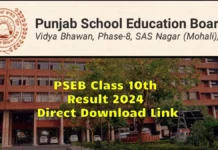Social media platforms have permeated almost every aspect of our lives. Their capacity to facilitate rapid communication and link individuals across geographic boundaries is unparalleled. The conventional educational environment has also undergone significant change thanks to SM, opening doors to cutting-edge teaching methods, increasing student participation, and enabling the democratization of information for all.
But all benefits considered, technology has to be approached with caution. You might not outright decide to ditch all social media for good, but you should definitely get to the bottom of its modern usage to make it your ally, not a replacement. Wonder how? We look at how social media is shaping college students’ educational routes in 2023 to give you all the tips and tricks.
Table of Contents
Transforming Communication
Social media’s potential to facilitate almost limitless communication and cooperation is what makes it what it is. Students can engage in lively intellectual debates outside the usual classroom setting by posting ideas on discussion boards and participating in group chats. A complicated physics idea may easily be addressed in a Facebook study group, with people from various countries contributing their insights to improve everyone’s knowledge.
Social media platforms’ interactive features inspire students to voice their opinions, engage in intellectual discussion, and develop the ability to analyze others’ viewpoints critically. It’s not unusual for a casual chat on Reddit or Quora to pique students’ interest and push them beyond the traditional student-teacher learning paradigm. In this way, social media is changing the way students come across and interact with academic content.
This exposure also aims to foster digital literacy and critical thinking. In a world where information is plentiful, these abilities are essential. Today, the capacity to separate reliable information from irrelevant data is a precious talent every forward-looking college should aim to foster. With the world abounding with ceaseless information, anyone can fall prey to fake news or pushy advertising at any moment.
Enhancing Engagement and Motivation
Social media can boost enthusiasm and participation, two essential components of efficient learning. In order to accommodate different learning styles, educators share information on websites like Instagram and YouTube, trying to make it aesthetically appealing and engaging. As an alternative to the standard text-based learning methods, SM helps teachers provide immersive instructive movies or fun infographics pertinent to the course.
Effective use of SM in educational settings should meet the demand of modern “digital natives.” Today, students have all the tools they need to perform any imaginable task. With a click of a button, they use potent paraphrasing tools that can instantly generate well-phrased, flawless essays. Don’t hesitate to take advantage of the best available tool https://writemyessays.ai/paraphrasing-tool if you ever have to up your paraphrasing game yourself. The power of AI tools for writing and paraphrasing is becoming truly extraordinary.
Now, all this means colleges face a challenge to offer curriculums that can rival students’ non-stop interaction with social media. To adequately accommodate the ever-changing needs of digital natives, colleges should stay on top of social media trends, effectively incorporating them into everyday study routines.
Fostering Global Learning Communities
Social media’s interactive features bring different cultures and beliefs together, fostering an inclusive learning atmosphere that improves students’ cultural sensitivity. Students gain firsthand knowledge about cultural quirks and worldviews distinct from their own. Today, a simple cross-cultural group project organized on Slack can become an abundant source of cross-cultural learning and exchange.
These cross-cultural encounters facilitated by social media help cultivate empathy and tolerance- two essential qualities of a global citizen. Modern hardships like climate change, human rights, and poverty are frequently debated on websites like Twitter and Instagram, exposing students to different viewpoints and igniting a sense of responsibility on a worldwide scale. But it’s not only the benefits that social media can bring us. There are ample potential risks too.
These can include information exhaustion, a distraction from important work, cyberbullying, and the risk of fake news. Make sure to check this article on the most pressing benefits and challenges of technology in our century. You need to develop appropriate digital hygiene to avoid potential risks. Setting limits for social media use to prevent interruptions and learning to validate the information from trustworthy sources may help.
The Way Forward
Social media is no longer merely a medium for amusement and networking. It has transformed communication, boosted participation, and fostered global learning communities. Proper use of social media can help students acquire all the skills they need to navigate our digital-first world better.
***
Sandra Dodrill is a student counselor and blogger. Sandra routinely educates students on the challenges of the digital era, with a specific emphasis on social media usage. She also routinely writes blog posts with the same aim in mind.













